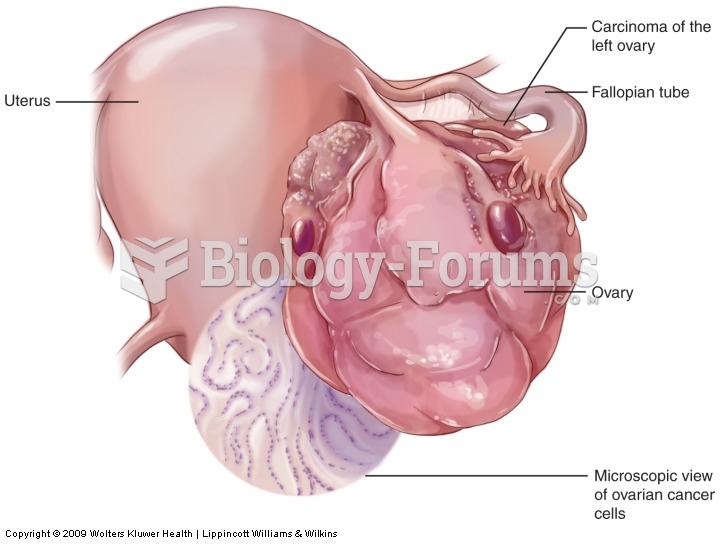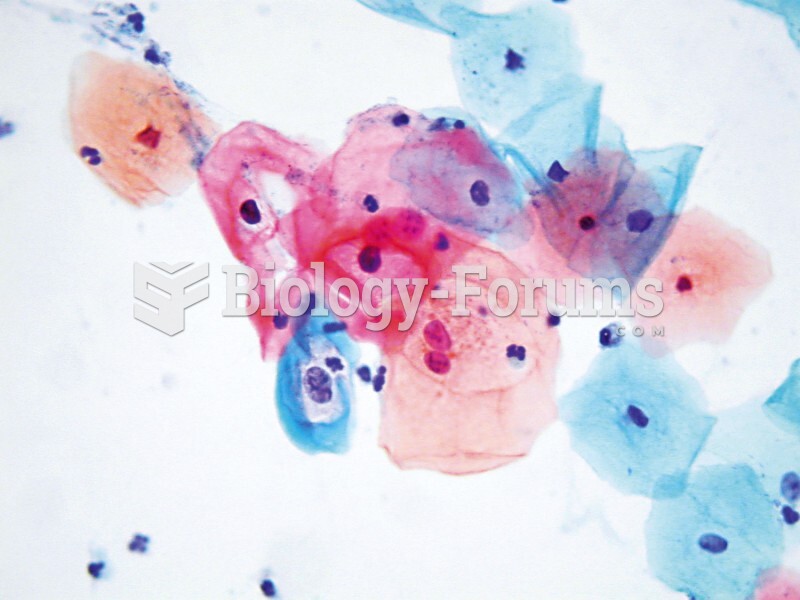|
|
|
The average adult has about 21 square feet of skin.
People who have myopia, or nearsightedness, are not able to see objects at a distance but only up close. It occurs when the cornea is either curved too steeply, the eye is too long, or both. This condition is progressive and worsens with time. More than 100 million people in the United States are nearsighted, but only 20% of those are born with the condition. Diet, eye exercise, drug therapy, and corrective lenses can all help manage nearsightedness.
There are approximately 3 million unintended pregnancies in the United States each year.
Calcitonin is a naturally occurring hormone. In women who are at least 5 years beyond menopause, it slows bone loss and increases spinal bone density.
People with high total cholesterol have about two times the risk for heart disease as people with ideal levels.
 A comparison between chromosomes found in a normal human cell and a cancer cell from the same person
A comparison between chromosomes found in a normal human cell and a cancer cell from the same person
 Pancreatitis. Inflammation of the pancreas may be the result of a bacterial infection, trauma, or ch
Pancreatitis. Inflammation of the pancreas may be the result of a bacterial infection, trauma, or ch





